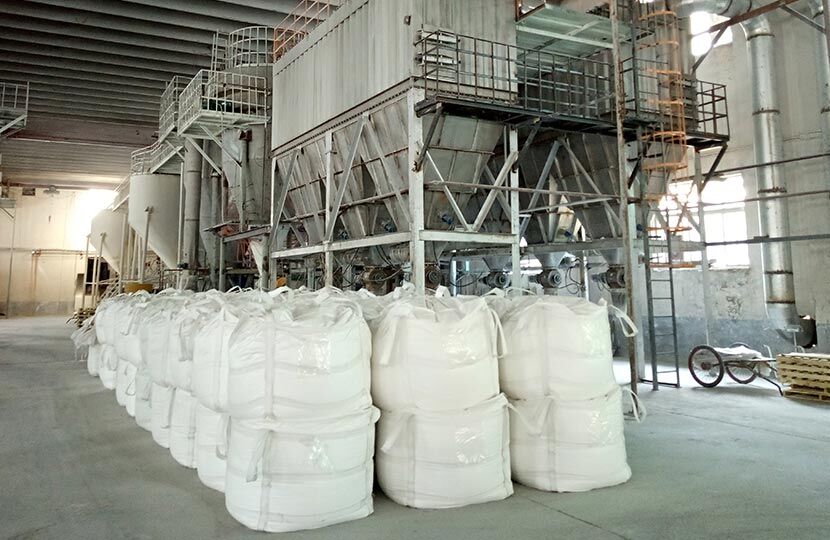How to use precipitated barium sulfate as filler in coatings
How to use precipitated barium sulfate as filler in coatings
Introduction
precipitated barium sulfate is a widely used filler in the coatings industry due to its excellent chemical stability, high density, low oil absorption, and ability to enhance the performance of coatings. It improves properties such as opacity, gloss, and weather resistance while also acting as an extender pigment. This article explores the benefits, application methods, and formulation considerations when using precipitated barium sulfate as a filler in coatings.
Benefits of Precipitated Barium Sulfate in Coatings
Enhanced Opacity and Whiteness: Due to its high refractive index, barium sulfate improves the opacity of coatings, making them more effective in covering surfaces.
Increased Gloss and Smoothness: The fine particle size of precipitated barium sulfate contributes to improved gloss and a smooth surface finish.
Excellent Chemical and Weather Resistance: Its inert nature ensures that coatings remain stable against harsh environmental conditions, including acids and alkalis.
Low Oil Absorption: This property helps maintain optimal viscosity in formulations, reducing the need for excessive amounts of binder.
Improved Mechanical Properties: It enhances the durability and hardness of coatings, making them more resistant to abrasion and wear.
Application Methods
When incorporating precipitated barium sulfate into a coating formulation, consider the following methods:
Dispersing in a Binder: Precipitated barium sulfate should be dispersed in a resin system using high-speed mixing to ensure uniform distribution.
Using a Dispersing Agent: A dispersing agent can help prevent agglomeration and improve the stability of the filler within the coating matrix.
Grinding and Milling: In high-performance coatings, additional grinding may be required to achieve optimal particle size distribution for better film formation.
Formulation Adjustment: Depending on the coating type (solvent-based, water-based, or powder coatings), adjust the loading levels to balance performance and cost efficiency.
Formulation Considerations
Particle Size Distribution: Choose an appropriate grade of barium sulfate to match the required level of fineness and dispersion.
Compatibility with Other Additives: Ensure that the filler does not interfere with other pigments, resins, or dispersing agents in the formulation.
Loading Levels: Typically, barium sulfate is used at levels between 10-50% by weight, depending on the desired coating properties.
Rheology and Viscosity Control: Monitor viscosity levels to prevent excessive thickening, which may affect application performance.
Conclusion
Precipitated barium sulfate is an excellent filler that enhances the performance of coatings by improving opacity, durability, and chemical resistance. Proper dispersion and formulation adjustment are key to achieving the desired properties. By optimizing its use in coatings, manufacturers can produce high-quality, cost-effective, and durable products suitable for various applications in the automotive, industrial, and decorative coatings sectors.
Tips for Using Precipitated Barium Sulfate as a Filler in Coatings
Introduction
Precipitated barium sulfate is a widely used filler in the coatings industry due to its excellent chemical stability, high density, low oil absorption, and ability to enhance the performance of coatings. It improves properties such as opacity, gloss, and weather resistance while also acting as an extender pigment. This article explores practical tips for effectively incorporating precipitated barium sulfate into coatings.
Key Benefits
Enhanced Opacity and Whiteness: Due to its high refractive index, barium sulfate improves the opacity of coatings, making them more effective in covering surfaces.
Increased Gloss and Smoothness: The fine particle size of precipitated barium sulfate contributes to improved gloss and a smooth surface finish.
Excellent Chemical and Weather Resistance: Its inert nature ensures that coatings remain stable against harsh environmental conditions, including acids and alkalis.
Low Oil Absorption: This property helps maintain optimal viscosity in formulations, reducing the need for excessive amounts of binder.
Improved Mechanical Properties: It enhances the durability and hardness of coatings, making them more resistant to abrasion and wear.
Practical Tips for Using Precipitated Barium Sulfate
Optimize Dispersion: Proper dispersion is essential for maximizing performance. Use high-speed mixing and a suitable dispersing agent to prevent agglomeration.
Control Particle Size: Selecting the right grade with an appropriate particle size ensures better uniformity, gloss, and film integrity.
Adjust Formulation Based on Coating Type: Different coating systems (solvent-based, water-based, or powder coatings) require specific loading levels and binder compatibility.
Monitor Viscosity and Flow Properties: Since barium sulfate has low oil absorption, it helps maintain optimal viscosity, but overloading can still impact rheology.
Ensure Compatibility with Other Additives: Test interactions with pigments, resins, and dispersing agents to maintain coating stability.
Test Performance in Final Application: Before scaling up production, evaluate the coating’s durability, adhesion, and resistance properties under real-world conditions.
Conclusion
Precipitated barium sulfate is an excellent filler that enhances the performance of coatings when used correctly. By following these tips, manufacturers can optimize formulation quality, improve durability, and achieve cost-effective, high-performance coatings suitable for various applications in the automotive, industrial, and decorative sectors.




